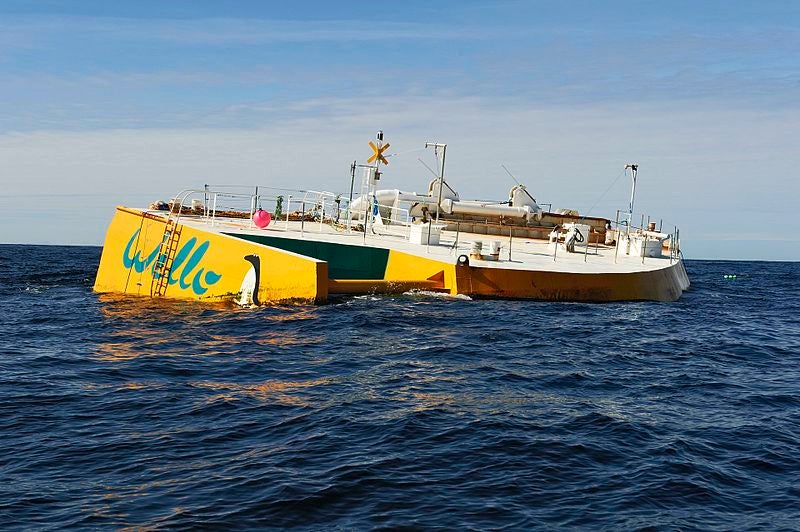
The wave power energy market has been predicted to have a compound annual growth rate of 10.2% between 2017 and 2023.
In theory, wave energy has great potential to be part of the world’s energy mix. The Energy Information Administration estimated that wave energy could have accounted for 66% of the US’s total electricity generation in 2017.
Traditionally the market has been based in Europe, but now countries like Australia, China and the US are beginning to establish themselves. Small islands in the Caribbean and elsewhere have also turned to wave energy to replace fossil fuels.
What are the latest trends in wave power? Power-technology.com analyses five current trends within the industry.
Stage gate metrics
Stage gate metrics is a system that allows for cross-sector, international approval of metrics. This ensures that no matter where you are in the world, everyone has the same way of understanding what is successful in wave energy. Stage gate metrics greatly facilitate global comparisons, helping wave technology developers to appeal to new markets.
Wave Energy Scotland has outlined three reasons why stage gate metrics are useful. They allow comparisons across different support schemes avoiding funding duplication. The metrics also encourage international collaboration and it standardises the benchmarks of success in ocean energy.
Oscillating body power converters
One of the key challenges facing wave energy is contending with the power of the oceans and the damage products can take. Wave energy companies have begun to develop new designs to combat this and increase productivity.
Finnish company Wello Oy’s device ‘The Penguin’ is one such design. The Penguin is loosely anchored to the sea bottom at a depth of 50m, with 2m visible above the surface of the water. It works by using the movement of its asymmetric shaped hull, which rolls and heaves with each wave to drive the generator and produce electricity.
The device weighs 1,600 tonnes and is 30m long, but Wello states that The Penguin is ‘discreet and non-disruptive’.
The Wave Dragon is the invention of Erik Friis-Madsen, and is designed as a curved ramp that incoming waves surge up onto. Behind the ramp is a reservoir that collects the water, from which the energy is extracted while the water drains from the reservoir back into the sea via hydro turbines.
The amount of energy produced is greater than the usual designs due to the ‘long reflector wings’ at either side of the reservoir, which channel water into the ramp.
Caribbean Islands making waves
The Caribbean has been described as a ‘pioneer’ in the development of wave energy. An area that has traditionally relied on fossil fuels, it has increasingly looked to wave energy to increase its share of renewable energy.
Bermuda has purchased two wave energy parks with a capacity of 40MW from Swedish company Seabased AB that will be operational by the end of 2019.
The islands of Aruba and Curacao were also visited by SINN Power in December with a view to develop wave energy to meet the islands’ goals of 50% renewable generation in 2020.
Microgrids: managing power on land and at sea
Microgrids have already greatly affected the development of renewables on land, and as such it will come as no surprise that they are being considered as a potential operating technology for wave power.
Australian company Carnegie Clean Energy has led the way in the use of microgrids. It is currently working with the Australian Department of Defence on what it calls ‘the world’s first wave integrated renewable microgrid project’ off the coast of Garden Island, Western Australia.
Wave power will combine with solar energy to power a 2MW solar farm and 2MW battery storage systems for the island. Carnegie is also working with the Mauritian Government on a CETO wave energy project and desalination plant.
Working with other renewables
Wave energy has the potential to work with other renewable forms of energy. As already mentioned, the Garden Island project will include a solar farm and battery storage system.
Scottish company DP Power has a similar wave project that will combine with wind energy. It is currently working with Floating Power Plant, which has the patent for the P80 wind-wave platform technology.
The wind-wave platform will initially combine an 8MW of wind power with 3.6MW wave power, with the potential to expand to a total of 47MW.
It is currently in the developmental stage, with both companies believing it will become commercially available in 2021/22.



